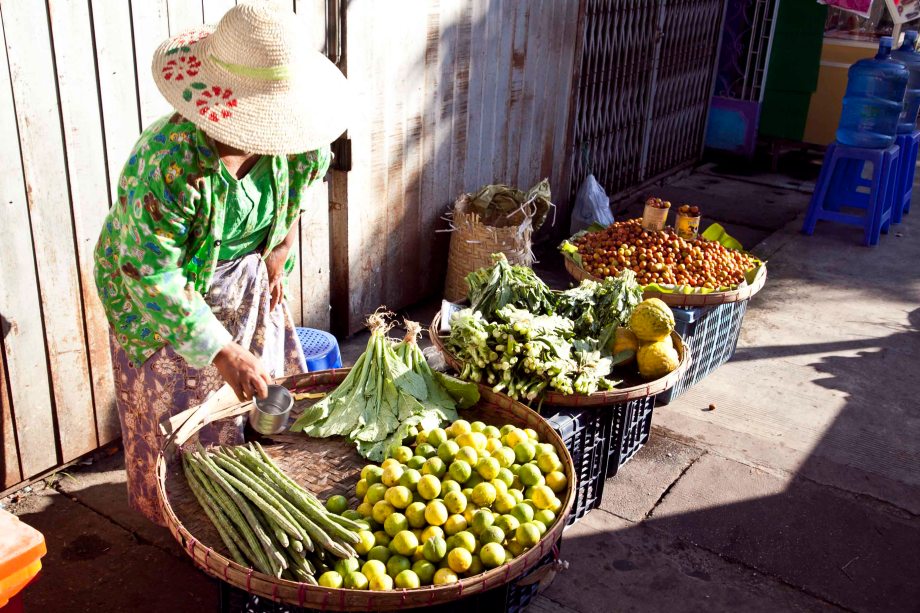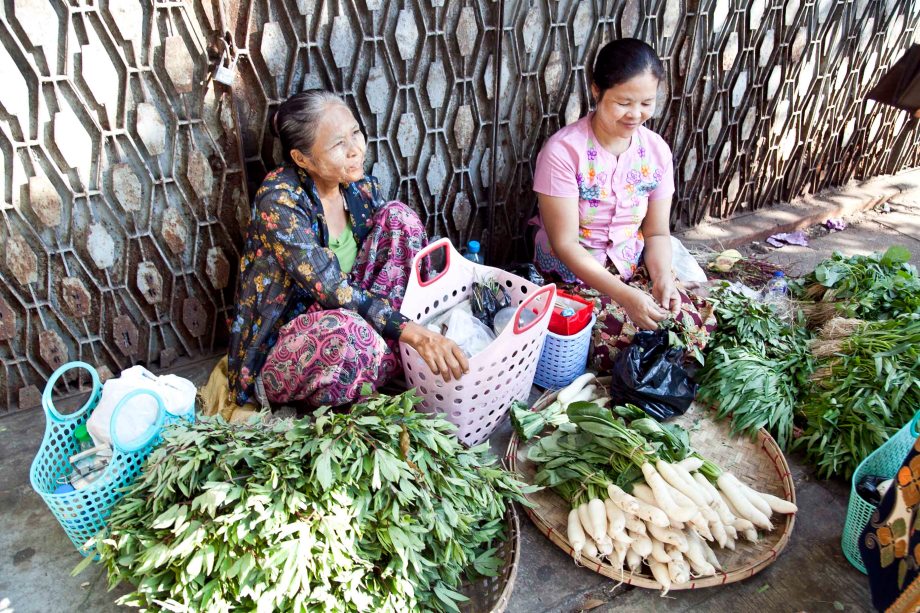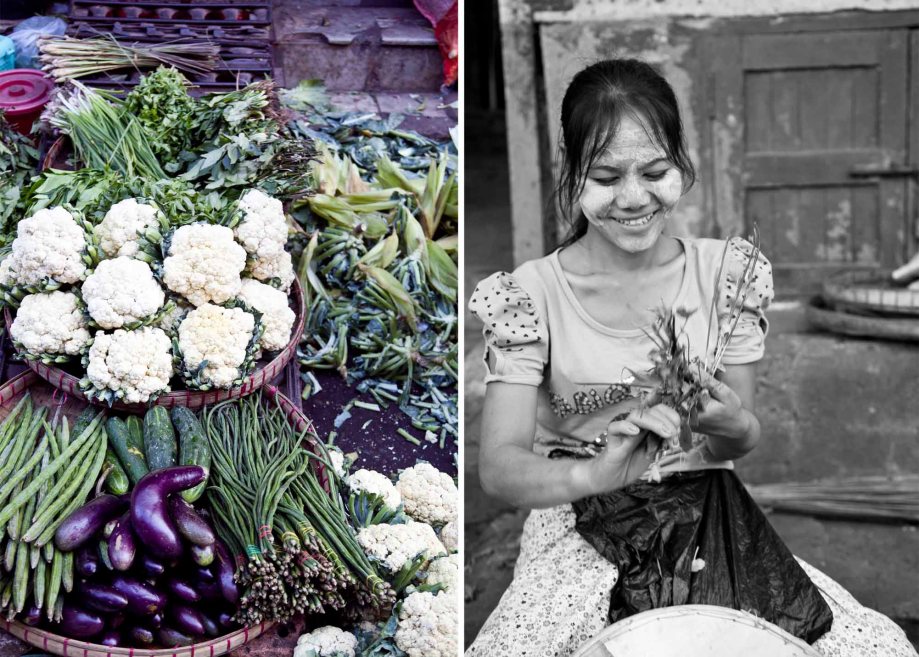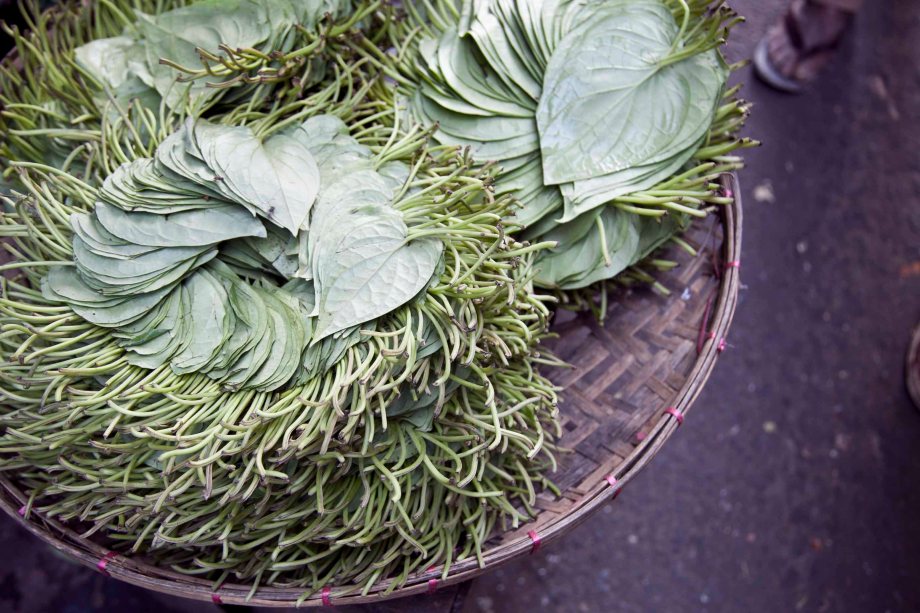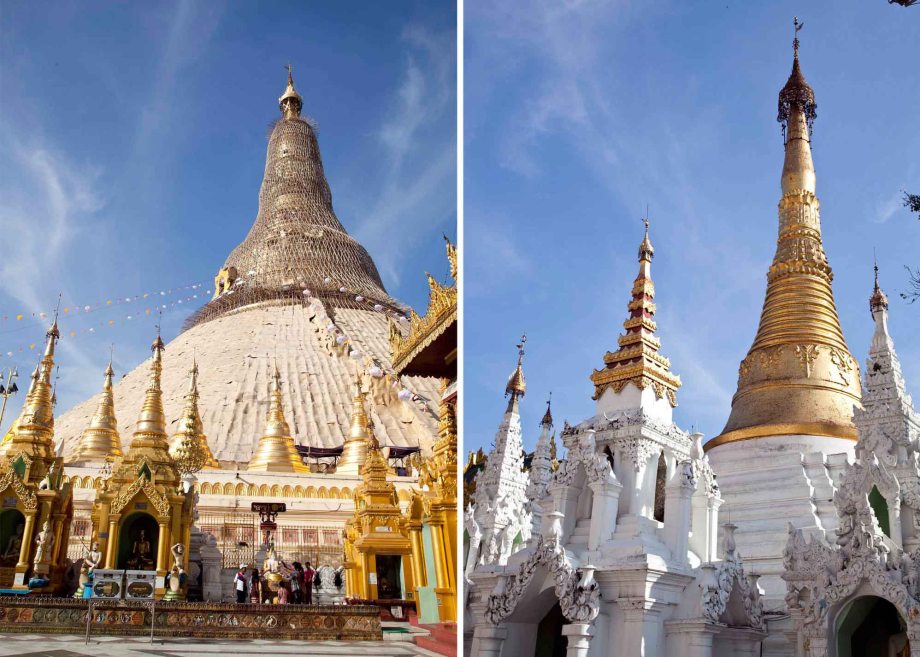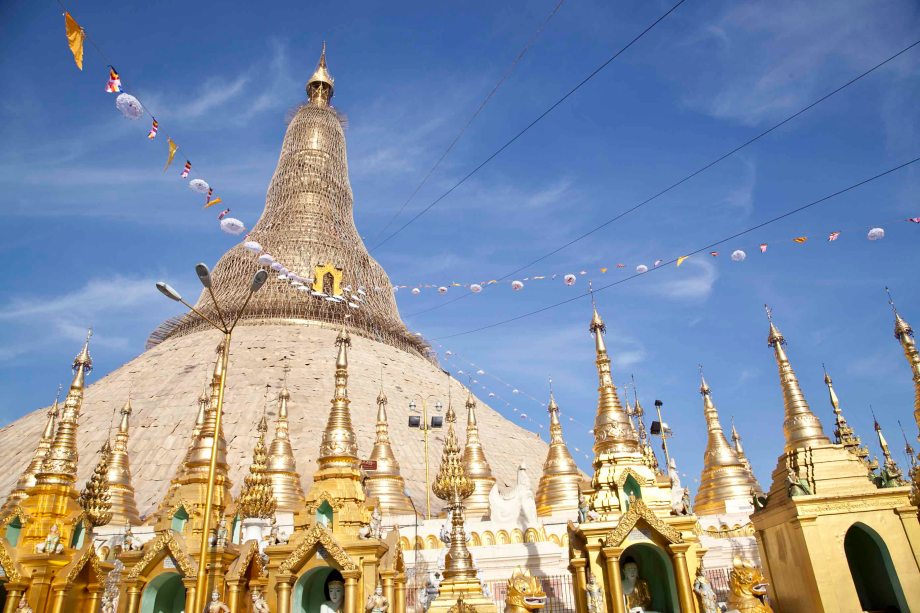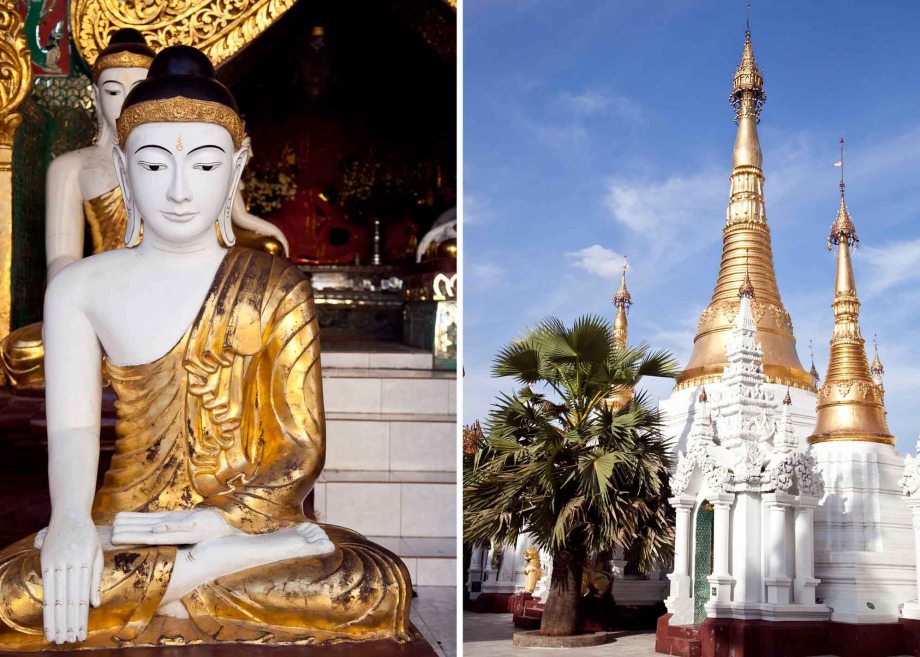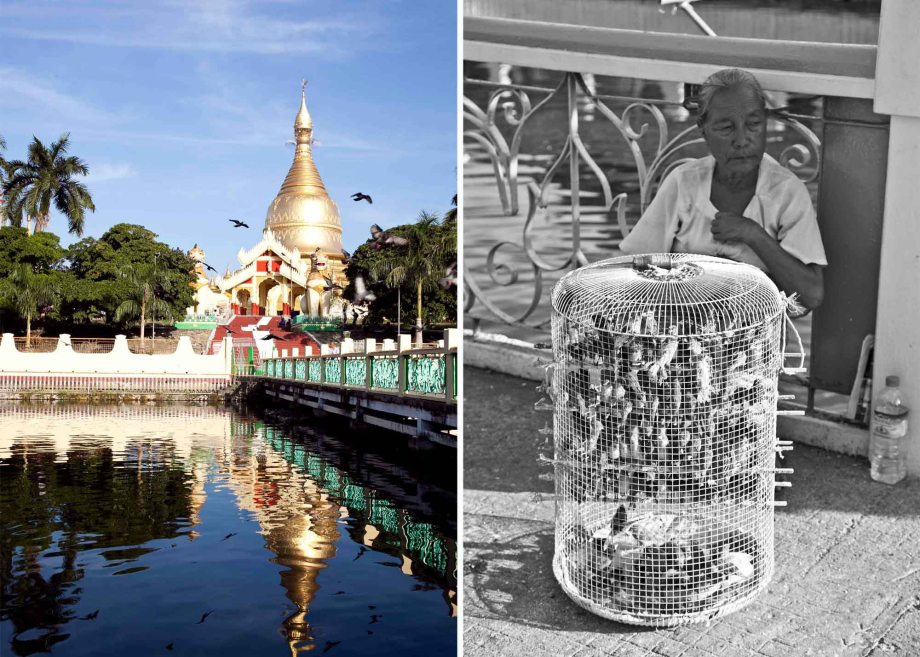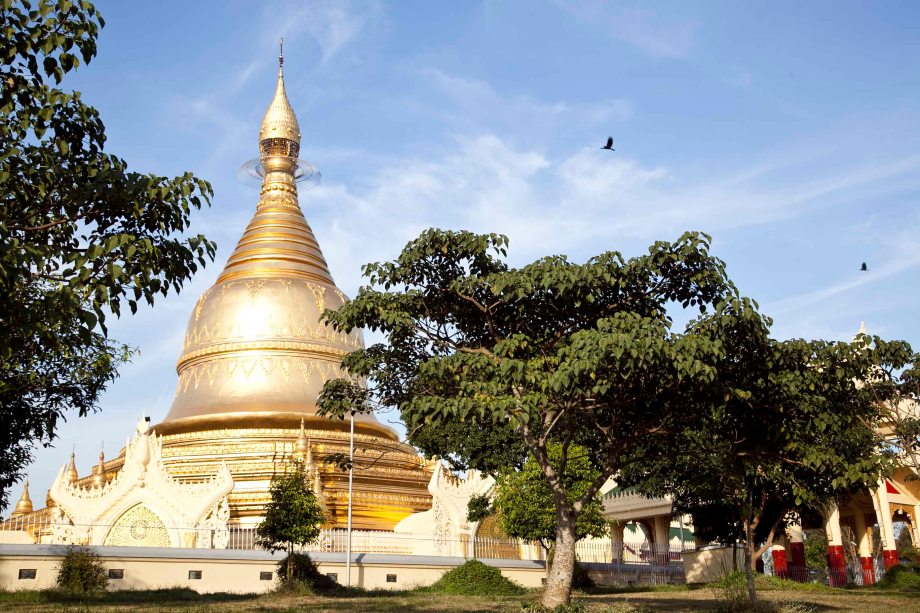Our second day in Yangon was short, as we were flying to Heho at around midday to explore Inle Lake and its surrounds. However, we had an interesting morning exploring the fresh produce markets along 26th Street in downtown Yangon. I have been to many fresh produce markets around the world and I have to say that the morning market on 26th Street is probably my favourite. And perhaps one of the most photogenic I have visited. It as a distinct local and authentic feel – with dirt and all. I think we were the only tourist there. But, if you like exploring markets, it is worthwhile taking a morning out to see the local trade.
Essentials:
Shop:
Although much more tourist orientated than the morning markets on 26th Street, if you want to purchase a souvenir or two from Myanmar, Bogyoke Aung San Markets in Yangon is the place to go for souvenirs from all around Myanmar under one roof. From lacquerware, to weavings, marionettes, teak carvings and parasols, it can all be found here. It is a rather difficult to sort through the hundreds of stalls and be confident that you’re buying authentic items, but if you didn’t have time to shop for souvenirs during your travels, this is the perfect last resort to get a piece of Myanmar. Some stores are better than others, so it’s worth having a good look around. My favourite store was Yoyamay Textile Gallery, which is the place to go for ethnographic textiles, particularly from the Chin and Kachina tribes from the north and north-west of Myanmar.
Did you know?:
Prior to 2010 independent travel was not allowed in Myanmar. If you wanted to visit the country, you had to do so on an organised and approved tour. There are still many parts of the country where tourists are not allowed to venture, or require a special government permit to visit.









